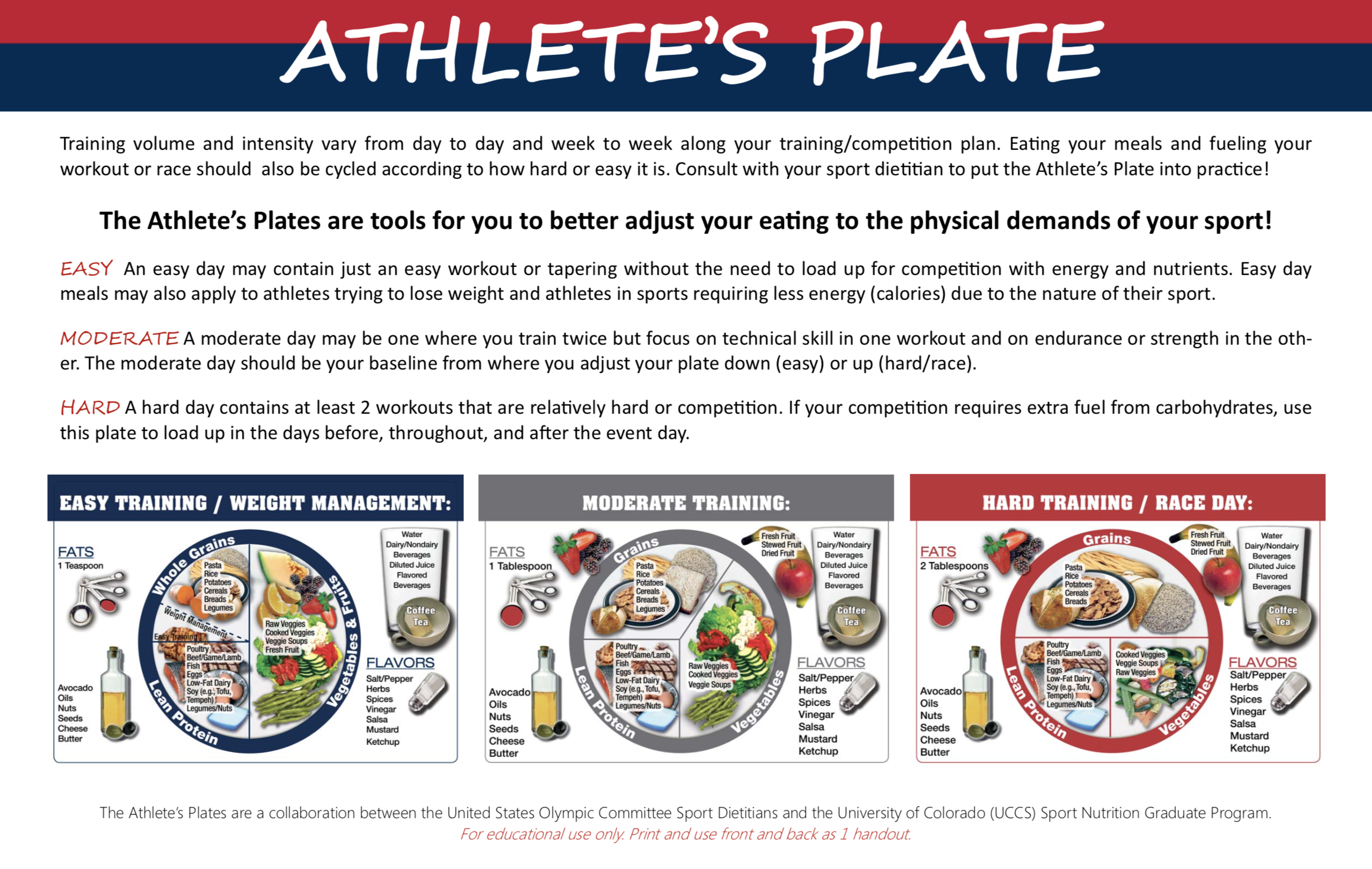Eating Enough Versus Too Much When Training
What an Athlete's Plate Should Look Like
Training for a half marathon or full marathon typically results in an increase in hunger. And while your nutrition needs do change during training, it might not be as much as you think.
As a sports dietitian, I typically see clients struggle with opposite ends of the spectrum. Some are not eating enough (under fueling) for their amount of physical activity and others are eating too much (over fueling).
So how much should you be eating?
Individual nutrition and calorie needs are dependent on many factors including gender, age, body size, activity level, goals, and types of foods eaten. The Athlete’s Plates from the USOC are a great starting point for how much to eat based on training levels. There are three plates – Easy Training, Moderate Training, and Hard Training.

The plates show the four food groups (carbohydrates, protein, fat, and produce) and portion sizes based on training. The main difference you’ll see on the plates is the amount of carbohydrates (carbs). Carbs are the main fuel source for your muscles and brain. When someone is more active, they need more carbs than someone who is less active. Similarly, someone will need more carbs on a hard training day versus an easy training day or rest day.
Additionally, fat needs may increase with an increase in training because you need more calories. Protein needs are typically based on body size and therefore don’t change much based on training although the amount may change based on individual goals such as when trying to lose body fat or gain lean muscle.
I would also like to note that if you are trying to lose weight, the best time to do so is not during training but rather during your “off season” when you are not training for a race. This is because when you are training for performance (meaning you want to feel great during your workouts and achieve a performance goal), you need to fuel your body with the correct amount of carbs, protein, and fat for optimal energy and recovery. When trying to lose weight, there is typically going to be an adjustment to your calorie or food group goals in order to see the physical results desired and these adjustments may not be optimal for performance. That is not to say that you cannot lose weight during training, but rather that in order to so, be prepared that you may need to be under fueled for some workouts which could result in less energy and suboptimal performance and that you would need to be strategic about the timing of your food intake to still optimize recovery post-workout.
Starting out, I recommend using the plate method to help guide your food choices and portion sizes. Choose whole foods that are minimally processed the majority of the time and make sure you are getting a balance of carb, protein, and fat foods. I also recommend tracking your current food intake for a few days (making sure to include an easy, moderate, and hard training day), and seeing if you notice any problem areas where you may be under or over fueling. You can also use this information to compare to your energy levels before, during, and after a training run.

Jill Merkel, MS, RD, CSSD
Sports Dietitian & Owner of Nutrition for Endurance
www.JillMerkelRD.com
Merkel.jill@gmail.com
Connect With Us
see the latest from Fleet Feet Nashville